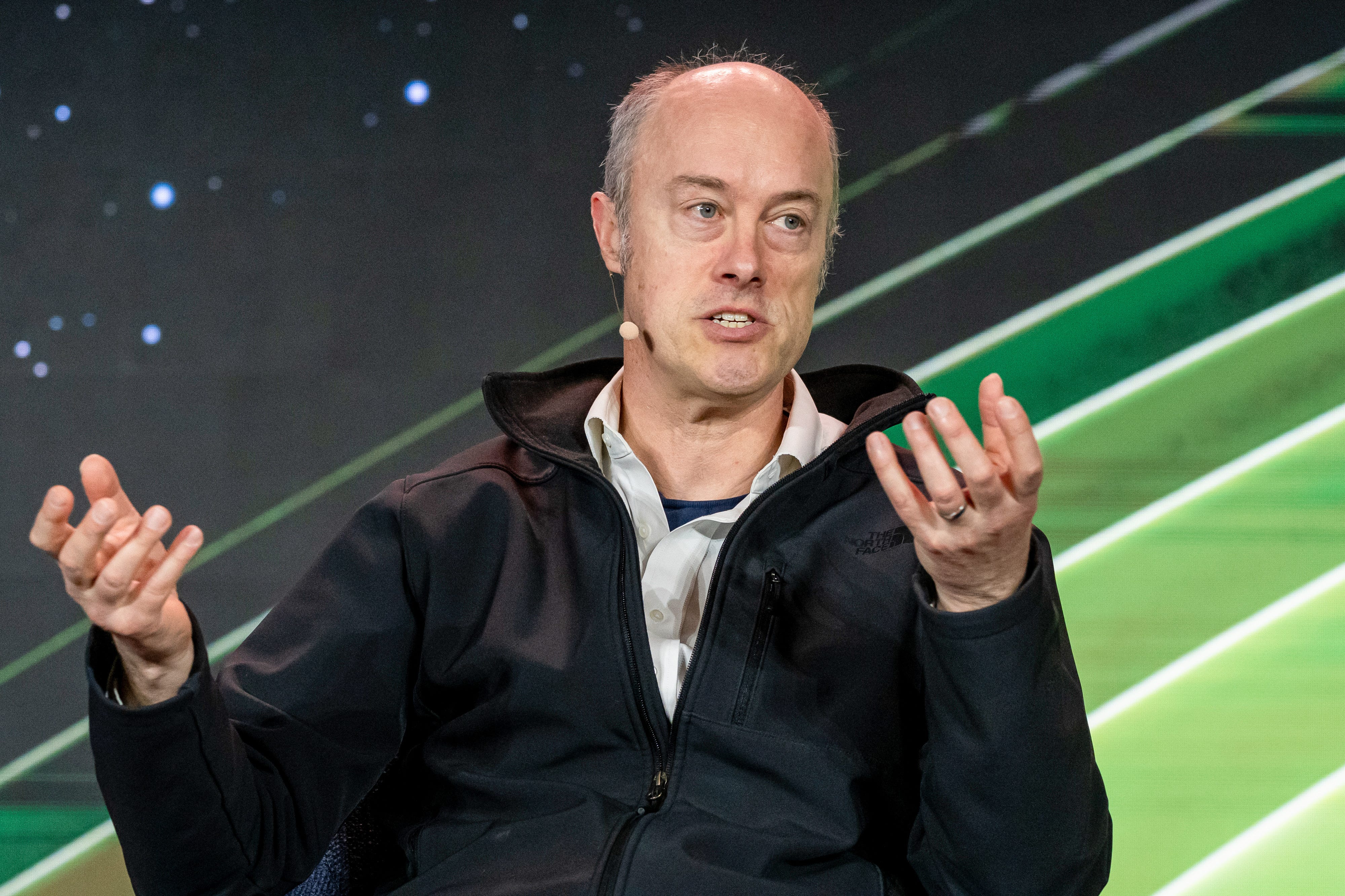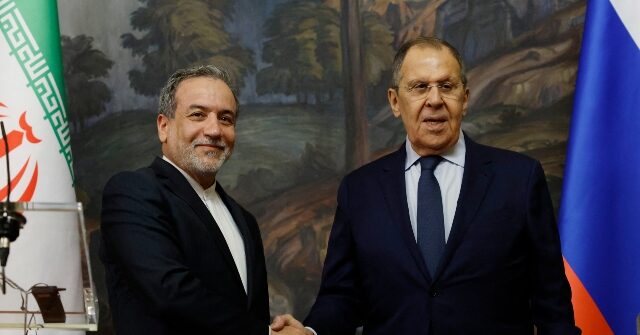
Bloomberg/ Getty Images
Ian Buck, Nvidia’s vice president of hyperscale and high-performance computing, felt a twinge of nostalgia during CEO Jensen Huang’s keynote presentation at their GTC conference in March.
Huang spent nearly eight minutes on a single slide listing software products.
“This slide is genuinely my favorite,” said Huang onstage in front of 17,000 people. “A long time ago — 20 years ago — this slide was all we had,” the CEO continued.
Buck said he was instantly transported back to 2004 when he started building the company’s breakthrough software, called Compute Unified Device Architecture.
Back then, the team had two people and two libraries. Today, CUDA supports more than 900 libraries and artificial intelligence models. Each library corresponds to an industry using Nvidia technology.
“It is a passionate and very personal slide for me,” Buck told reporters the next day.
The 48-year-old’s contribution to Nvidia is hard-coded into the company’s history. But his influence is just beginning. CUDA is the platform from which Nvidia jumped to, at one point, 90% market share in AI computing. CUDA is how the company defends its moat.

AP Photo/Nic Coury
One architecture to rule them all
Dion Harris, Nvidia’s senior director of high-performance computing and AI factory solutions, sometimes forgets that he’s in the room with the Dr. Ian Buck. Then it hits him that his boss, and friend, is a computing legend.
Since Buck’s undergrad days at Princeton in the late 1990s, he had been focused on graphics — a particularly punishing field within computer science with no obvious connection to AI at the time.
“Computer graphics was such a dweebie field,” said Stephen Witt, the author of “The Thinking Machine,” which details Nvidia’s rise from obscurity to the most valuable company in the world.
“There was a stigma to working in computer graphics — you were maybe some kind of man-child if this was your focus,” Witt said.
While getting his Ph.D. at Stanford, Buck connected multiple graphics processing units with the aim of stretching them to their limits. He had interned at Nvidia before pursuing his Ph.D., so he was familiar with the GPU. Initially, he used it for graphics like everyone else.
Buck has said that he and his cohort would use the chips to play video games such as “Quake” and “Doom,” but eventually, he started asking himself what else his gaming setup could do.
He became fixated on proving that you could use GPUs for anything and everything. He received funding from Nvidia and the Defense Advanced Research Projects Agency, among others, to develop tools to turn a GPU into a general-purpose supercomputing machine. When the company saw Brook—Buck’s attempt at a programming language that applied the power of GPUs beyond graphics, Nvidia hired him.
He wasn’t alone. John Nickolls, a hardware expert and then director of architecture for GPU computing, was also instrumental in building CUDA. Buck may have been forever paired with Nickolls if the latter had not died from cancer in 2011.
“Both Nickolls and Buck had this obsession with making computers go faster in the way that a Formula 1 mechanic would have an obsession with making the race car go faster,” Witt told BI. (The author said Huang expressed frustration that Nickolls doesn’t get the recognition he deserves since his passing.)
Buck, Nickolls, and a small team of experts built a framework that allowed developers to use an existing coding language, C, to harness the GPU’s ability to run immense calculations simultaneously rather than one at a time and apply it to any field. The result was CUDA, a vehicle to bring parallel computing to the masses.
The rise of CUDA as an essential element in the world of AI wasn’t inevitable. Huang insisted on making every chip compatible with the software, though hardly anyone was using it despite being free. In fact, Nvidia lost millions of dollars for more than a decade because of CUDA.
The rest is lore. When ChatGPT launched, Nvidia was already powering the AI computing revolution that is now the focus of $7 trillion in infrastructure spending, much of which eventually goes to Nvidia.
King of the nerds
Buck’s smarts do have limits. He joked to an eager audience at GTC that quantum chromodynamics, a field of particle physics, just won’t stick in his brain. But he thrives in Nvidia’s notoriously rigorous environment.
The Santa Clara, California, company has an intense culture that eschews one-on-one meetings and airs missteps and disagreements in public. It might sound terrifying, but for those with the brains to keep up, the directness and the rigor are ideal.
For this report, Business Insider spoke with four people who have either worked directly with Buck at Stanford, Nvidia, or both.
Those who know Buck personally describe him as gregarious and easygoing but capable of intensity when goals are on the line. He’s focused on results rather than theory.
In his public remarks, at panels and in interviews on behalf of Nvidia, Buck volleys from rapid, technical lines of thought to slower, simple descriptions in layman’s terms.
At a GTC press conference, he detailed the latest development in convolutional neural networks and then described proteins as “complicated 3D squigglies in your body.” He describes the tiny, sensitive interconnects between parts of an Nvidia chipset like the Geek Squad explaining the back of a TV from memory — it’s all in his head.
Harris said storytelling ability is particularly important in the upper ranks at Nvidia. Since the company essentially had a promising technology waiting for a market for years, Huang still sees being early as a business strategy. He has branded it “going after zero billion-dollar markets.” The potential of AI, “AI factories,” and the infrastructure spending that goes with them is a story Nvidia can’t stop telling.
Buck’s shilling skills have improved over the years. But even in 15-year-old footage, he’s most animated when explaining the inner workings of Nvidia’s technology.
“A lot of developers are amazing, but they say, ‘Leave me alone. I’m going to write my code in the mountains somewhere,” Paul Bloch, president of Nvidia partner DDN, told BI. Nvidia’s leaders aren’t like that, he said. Much of Nvidia’s upper echelon may have the skills to match the reclusive set, but they don’t choose between showmanship and code.
Ian Buck’s next act
Ian Buck’s work at Nvidia began with a simple mandate: make the GPU work for every industry. That mission is very nearly accomplished. There are hundreds of CUDA libraries targeting industries from weather forecasting to medical imaging.
“The libraries are really there to connect the dots so that every business doesn’t have to learn CUDA,” Harris said.
CUDA draws its strength from millions of developers, amassed over decades, who constantly innovate and improve on the platform. So far, no one has caught Nvidia’s heels, but the competition is coming faster than ever.
Even as Buck spoke at GTC, developers across the world were trying to break through CUDA’s dominance. The first night of the conference, a cast of competitors convened by TensorWave, an AI cloud company exclusively using chips from Nvidia’s only US rival, AMD, held an event entitled “Beyond CUDA.”
Tensorwave cofounder Jeff Tatarchuck said it included more than “24 presenters talking about what they’re doing to overcome the CUDA moat.”
AMD, which also presented at the event, is making an explicit effort to catch up on the software side of AI computing, but industry analysts say they’re not there yet.
Harris told BI Buck’s team spends a lot of time speaking with researchers to stay on top. That’s always been true, but the nature of the work has changed. A decade ago, Buck was convincing researchers to apply accelerated computing to their problems; now the tables have turned.
“One of the most challenging parts of my job often is to try to predict the future, but AI is always surprising us,” Buck said at a Bank of America conference this month. Understanding what the smartest minds in AI need from Nvidia is paramount.
Many saw DeepSeek, the company that spooked markets with its ostensibly cheap reasoning AI model, as a threat to Nvidia since the team bypassed CUDA to squeeze out the performance gains that allowed it to achieve competitive results with less compute.
But Buck recently described the Chinese team as “one of the best CUDA developers out there.”
AI is entering a new phase as more companies commercialize their tools. Even with Nvidia’s enormous head start, in part built by Buck, the pace is intense.
For example, one of the products Nvidia debuted at GTC, Dynamo, is an inference computing platform designed to adapt to the rise of reasoning models. Nvidia launched Dynamo a couple of months after the DeepSeek earthquake, but some users had already built their own versions. That’s how fast AI is evolving.
“Inference is really hard. It’s wickedly hard,” said Buck at GTC.
Talent is also a big part of how Nvidia is going to try to maintain its dominance, and another place where, Witt says, Buck has value beyond his technical skills. He’s not exactly a household name, even at Stanford.
But for a certain type of developer, the ones who can play in Buck’s extremely complex sandbox, he is a draw.
“Everyone’s trying to hire these guys, especially after DeepSeek,” said Witt. “This was not a sexy domain in computer science for a long time. Now it is white hot.”
“Now these guys are going for big money. So, I think Ian Buck has to be out there advertising what his group is doing,” Witt continued.
Nvidia declined to make Ian Buck available for an interview with Business Insider and declined to comment on this report.
Who’s Nvidia’s next CEO?
Buck is more than a decade younger than Huang, who is 62, and doesn’t plan on going anywhere anytime soon. Yet, questions about succession are inevitable.
Lip-Bu Tan, a semiconductor industry legend who recently became Intel’s CEO, told BI that Buck is one of a handful of true collaborators for Huang, who has more than 60 direct reports.
“Jensen has three right-hand men,” Tan told BI before he took over at Intel. Buck is one. Vice President of GPU Engineering Jonah Alben is another. And CFO Colette Kress, though clearly not a man, is the third, Tan said.
Jay Puri, Nvidia’s executive vice president for worldwide field operations, and Sanja Fidler, vice president of AI research, are also names that come up in such conversations.
“I don’t think Ian spends a lot of time doing business strategy. He’s more like the world’s best mechanic,” Witt said.
The post Ian Buck built Nvidia’s secret weapon. He may spend the rest of his career defending it. appeared first on Business Insider.




